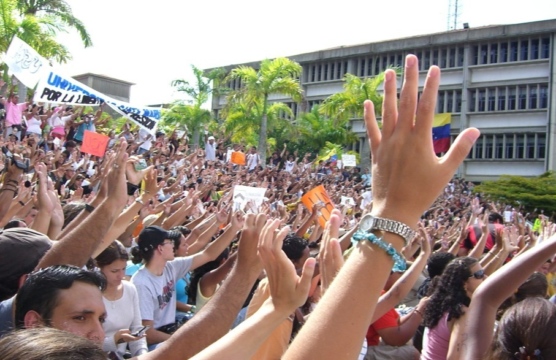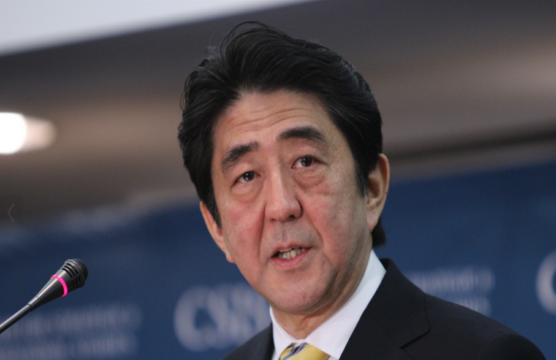How ‘Strategically Important’ Is Latin America?
Chinese exports to Latin America grew 12 to 15 percent last year, and could make up for declining demand from developed markets.
El Salvador’s sluggish economy and outdated economic model present serious challenges for the future. Weak economic performance means that life is hard and opportunities are scarce for large portions of the population. It also has far-ranging implications for a variety of issues, including migration, social inclusion, and insecurity. With the increase in external indebtedness, fiscal expenditure, and failed monetary policy (with the introduction of Bitcoin), El Salvador needs to accelerate a different economic development strategy.
Towards a New Strategic Approach
In the age of the knowledge economy, a central development challenge for El Salvador is to strengthen the human capital base of their youth and workforce.
Education, skills attainment, and workforce training are not only precarious but also disconnected from the demands of a competitive labor force in the global economy. Moreover, the labor force feels entirely demotivated to stay in their homeland when there are no means to achieve the material circumstances that can be enjoyed in the modern society.
An innovative development strategy integrating migration, remittances, savings, trade, and education, can help El Salvador attain greater levels of development and ensure that Salvadorans have opportunities without having to migrate.
The approach links migration, trade and development through four unique and innovative components:
Economic Trends
Sluggish economic growth of two percent on average over the past 15 years has simply not provided enough resources to strengthen the country’s economy. Meanwhile, GDP per capita has only grown at 1.5 percent a year, on average, and one third of the population lives below the poverty line.
Moreover, this very limited growth has occurred as a byproduct of an outdated economic model that presents few opportunities for sustainable, equitable development. As of 2014, 26 percent of the country’s GDP originated from exports (mostly agriculture and maquilas, plus a few services), 17 percent from family remittances, and four percent from tourism. Basically, exports and migration constitute half of El Salvador’s GDP. Now, it is more than 60 percent.
Table 1: Economic Growth Indicators, 2000-2022
Source: World Bank Data. Accessed February 2016; 2021. Central Bank of El Salvador (remittances)
But upon closer examination, El Salvador’s export-oriented approach is even more problematic. Its export market has traditionally been vulnerable in that it produces a relatively small number of products for a handful of countries. Its main exports are knit T-shirts and other clothing items, sugar, coffee, and electrical capacitors. Fifteen commodities make 75 percent of US imports. Moreover, an estimated 40 percent of the value of exports is generated by only 10 firms that trade in only a handful of products.
Table 2: US Commodity imports from El Salvador
Source: US Trade statistics.
Implications for Migration
Because of poverty, transnational links, and social tensions, many Salvadorans choose to migrate in search of better opportunities abroad. Migration is the byproduct of push factors associated with violence and limited economic opportunities in a context where jobs are mostly informal, low paid and unskilled.
For example, in a 2021 survey, the intention to migrate (at 36 percent among households) increased among those in the informal economy or were unemployed. Pull factors such as transnational family networks and demands for low-paid foreign labor (a Salvadoran in the US will make 12 times more than what he or she makes in El Salvador) also come into play.
Table 3: Migration from El Salvador
Source: Authors’ estimates based on US Census, DHS, US Immigration Statistics, and survey data. Orozco, Manuel, Family Remittances in 2021: Is Double-Digit Growth the New Normal? March, 2022.
Implications for Development
Overall, given these economic realities, El Salvador is in between two income generation poles (exports and migration), with a ‘missing middle,’ the informal economy. These economic realities present various problems.
First, the value chain connecting trade with export business is very limited, with few policy incentives for small businesses to engage with the global economy. Most exporting businesses consist of large enterprises (no more than 30 companies) handling the majority of exports and employing about one third of the labor force, mostly low skilled workers such as coffee pickers, garment makers, or call center operators.
Second, the economic dimension of migration is completely neglected by policy makers. Salvadorans abroad send home over US$7 billion in remittances annually, supporting over one million households in a country of two million households. In addition, they purchase Salvadoran products, call and visit home, and send money for business investments and philanthropic efforts. The impact of these activities is significant. For example, on average, one in five Salvadorans is interested in investing in their home country. Moreover, ninety percent of Salvadoran migrants purchase Salvadoran products totaling about US$130 in value each month. Despite the fact that this dimension represents opportunities for growth with equity, the government largely fails to capitalize on it. One critical consideration that pertains to migration and development is the fact that financial inclusion leads to asset building, and those who build assets are less likely to migrate. Remittance recipients are the low hanging fruit in financial inclusion opportunities because they have more disposable income but little financial access. Moreover, targeting remittance recipients is important because they are more likely to migrate than non recipients.
Table 4: Key Impact Indicators in the U.S. – Central American Corridor, 2012
Source: Authors’ estimates based on migrant survey data.
Third, the “missing middle” continues to be neglected or addressed with incomplete and inconsistent tools. The informal sector works in saturated and non-competitive markets (it accounts for over 60 percent of the labor force and 70 percent of businesses in the country). Therefore, is important to focus on the informal sector through a two-tiered approach, reducing the size of these unipersonal micro-businesses by transferring them into secure and stable jobs through skills and value chain anchors, and second, improving the competitive capacity of small businesses by tackling some of the challenges that prevail: low financial access, business competitive capacity, and no tax incentives, among others.
The Real Root Causes of the Central American Migration Crisis
Will El Salvador Reach a Lending Deal With the IMF?
Is Embracing Bitcoin the Right Move for El Salvador’s Economy?
Chinese exports to Latin America grew 12 to 15 percent last year, and could make up for declining demand from developed markets.
Chinese media coverage of Latin America in February focused primarily on opposition protests in Venezuela.
Prime Minister Shinzo Abe’s tour of Latin America this summer will be the first Japanese state visit to the region in a decade.

